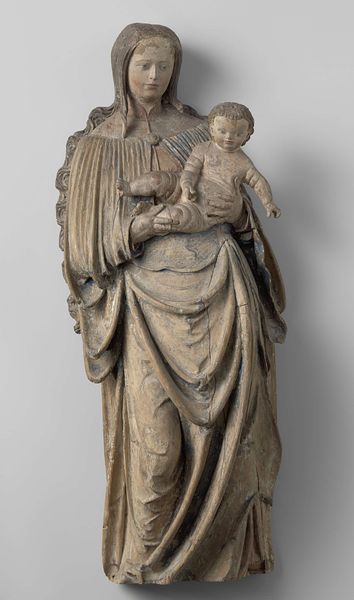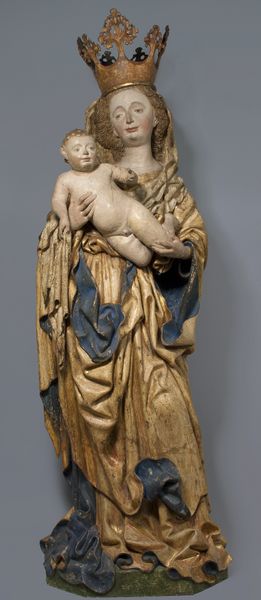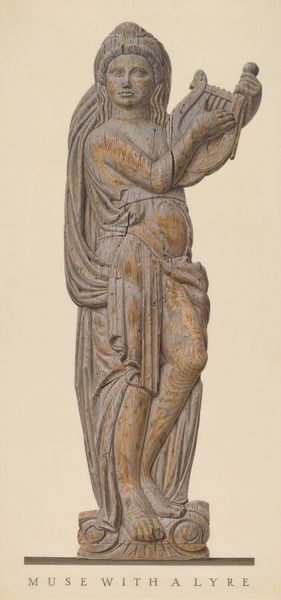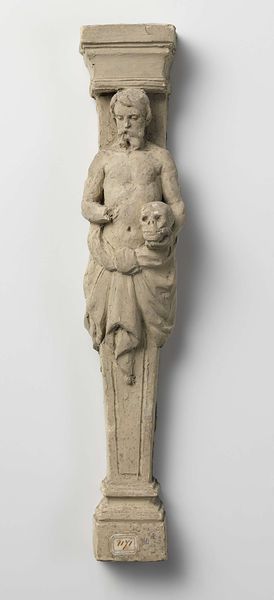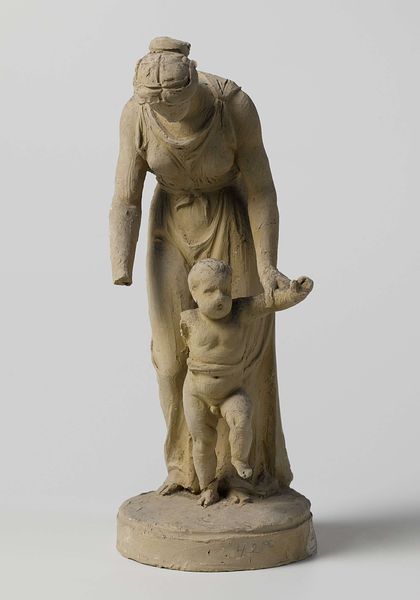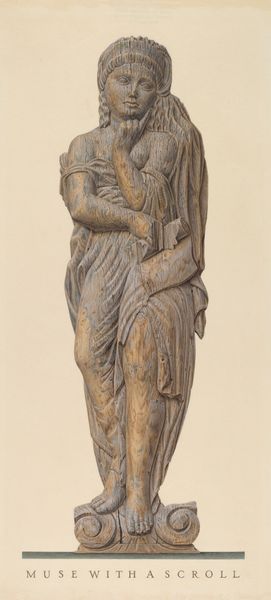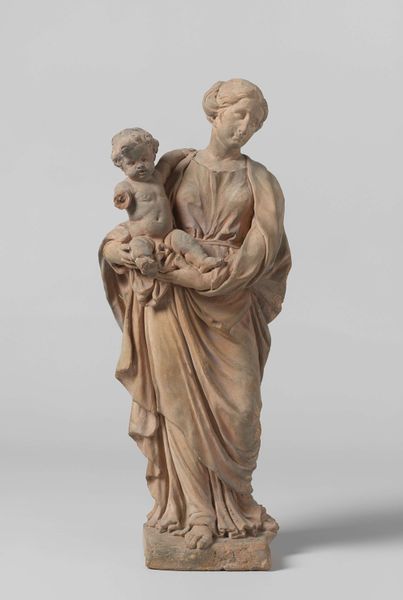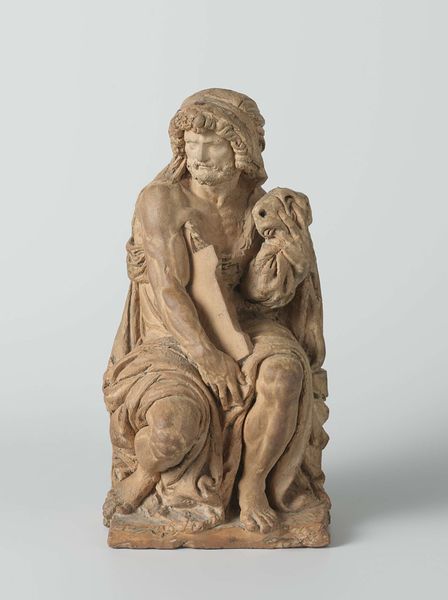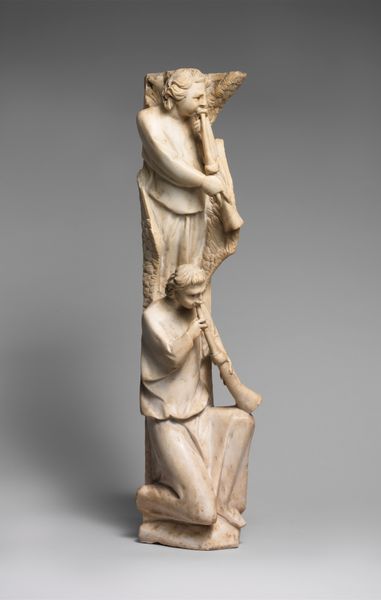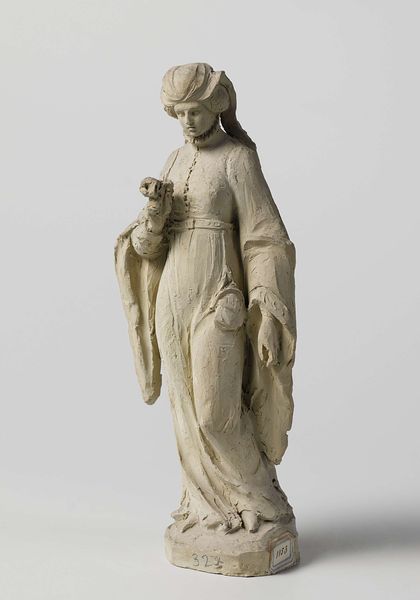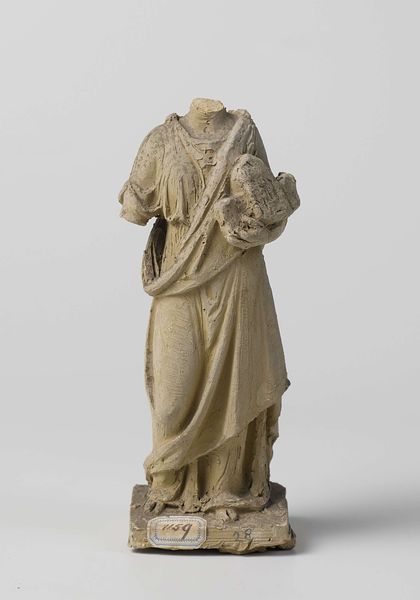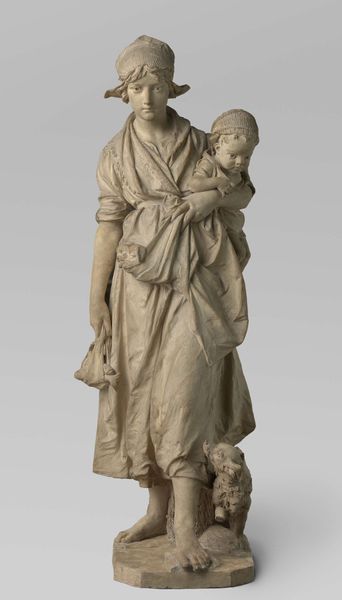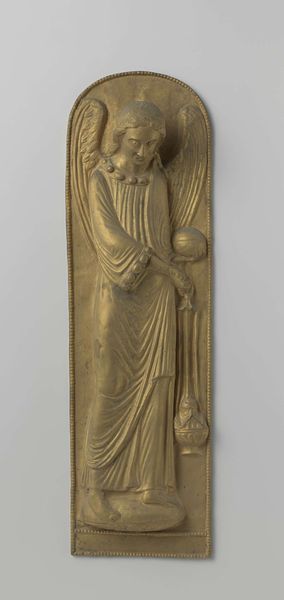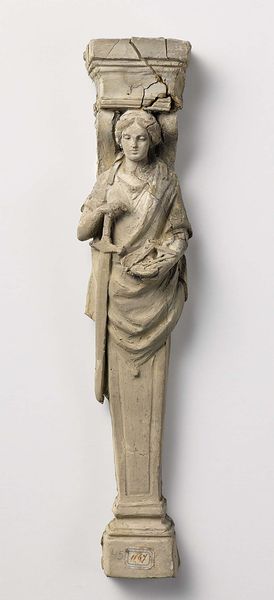
carving, sculpture, wood
#
portrait
#
medieval
#
carving
#
sculpture
#
figuration
#
sculpture
#
wood
#
italian-renaissance
Dimensions: height 130 cm, width 46 cm, depth 14 cm, height 51 cm, width 154 cm, depth 69 cm
Copyright: Rijks Museum: Open Domain
This sculpture of the Virgin and Child was made by Jacopo della Quercia from wood, probably sometime in the early 15th century. Wood has been used for artistic expression across cultures and time, valued for its availability and workability, and also its symbolic connection to nature and life. Consider how della Quercia skillfully used carving techniques to reveal the forms within the wood. Note the folds of Mary's robes, and the tender embrace of mother and child. The sculptor would have employed chisels, gouges, and rasps to gradually shape the wood, layer by layer. The surface texture reveals the marks of these tools, a direct record of the artist’s hand. There is no underestimating the sheer physical labor and refined skill required for this kind of sculpture. The ability to manipulate material in this way was traditionally regarded as craft, rather than fine art. Yet, as this powerful sculpture shows, such distinctions are artificial. It embodies deep cultural values and artistic vision expressed through the materiality of wood and the artistry of carving.
Comments
No comments
Be the first to comment and join the conversation on the ultimate creative platform.
